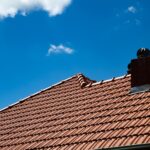When it comes to maintaining a healthy and efficient home, the significance of proper attic ventilation often goes underappreciated. Many homeowners focus on aesthetics and structural elements of their roofs, but good attic ventilation plays a crucial role in extending the life of your Franklin roofing system and keeping your home comfortable and energy efficient. Let’s dive into why proper attic ventilation is so important and how it can impact your home.
1. Preventing Roof Damage
One of the primary functions of attic ventilation is to regulate the temperature and humidity levels in your attic space. Without adequate ventilation, heat and moisture can build up, causing several issues:
- Shingle Damage: Excessive heat can lead to premature aging of your roofing shingles. As the temperature in the attic rises, it can cause shingles to become brittle and crack, leading to potential leaks and damage to the roofing structure.
- Ice Dams: In colder climates, poor attic ventilation can contribute to the formation of ice dams. Ice dams occur when warm air from the attic melts snow on the roof, which then refreezes at the eaves, creating a dam. This can lead to water backing up under the shingles and leaking into the home.
2. Enhancing Energy Efficiency
Proper attic ventilation helps maintain a consistent temperature throughout your home, which can lead to significant energy savings. In the summer, a well-ventilated attic allows hot air to escape, reducing the workload on your air conditioning system. In the winter, it helps prevent heat buildup that could contribute to ice dams and other issues.
- Reduced Cooling Costs: By allowing hot air to escape, your air conditioner doesn’t have to work as hard to cool your home, which can lead to lower energy bills.
- Improved Insulation Performance: Ventilation helps maintain the effectiveness of your insulation. When an attic is properly ventilated, insulation performs better because it doesn’t have to contend with excessive moisture or heat buildup.
3. Preventing Moisture Issues
Moisture control is another critical aspect of attic ventilation. High humidity levels in the attic can lead to:
- Mold Growth: Excess moisture can lead to mold and mildew growth, which not only affects your home’s structural integrity but can also pose health risks to the inhabitants.
- Wood Rot: Prolonged exposure to moisture can cause wood components in the attic to rot, which can compromise the structural integrity of your home and lead to costly repairs.
4. Extending the Lifespan of Your Roofing
Proper ventilation helps to preserve the lifespan of your roofing materials. By preventing heat and moisture buildup, your roof’s materials are less likely to deteriorate prematurely. This can save you from frequent repairs and the need for an early roof replacement, ultimately saving you money in the long run.
5. Enhancing Indoor Comfort
Good attic ventilation contributes to a more comfortable living environment. Inadequate ventilation can lead to uneven temperatures and increased humidity in the home, which can make living spaces less comfortable. Proper airflow helps to keep indoor temperatures more consistent and can reduce the likelihood of stuffy or damp indoor conditions.
Tips for Ensuring Proper Attic Ventilation
To achieve optimal attic ventilation, consider the following tips:
- Install Soffit Vents: These vents allow fresh air to enter the attic from the eaves, helping to ensure that airflow reaches the entire attic space.
- Add Ridge Vents: Ridge vents installed along the peak of your roof allow hot air to escape efficiently.
- Use Gable Vents: These are placed on the gable ends of your home and can help to increase cross-ventilation.
- Ensure Proper Insulation: Insulation should not block ventilation channels. Ensure that insulation is properly installed and doesn’t obstruct air flow.
- Regular Maintenance: Periodically inspect your attic for signs of poor ventilation, such as mold, rot, or excessive dust, and address any issues promptly.
In conclusion, proper attic ventilation is a key component of a well-functioning roofing system in Franklin. By preventing roof damage, enhancing energy efficiency, controlling moisture, extending the lifespan of your roof, and improving indoor comfort, you can enjoy a more durable and cost-effective home. Investing in good ventilation practices not only protects your roof but also contributes to a healthier, more comfortable living environment.


